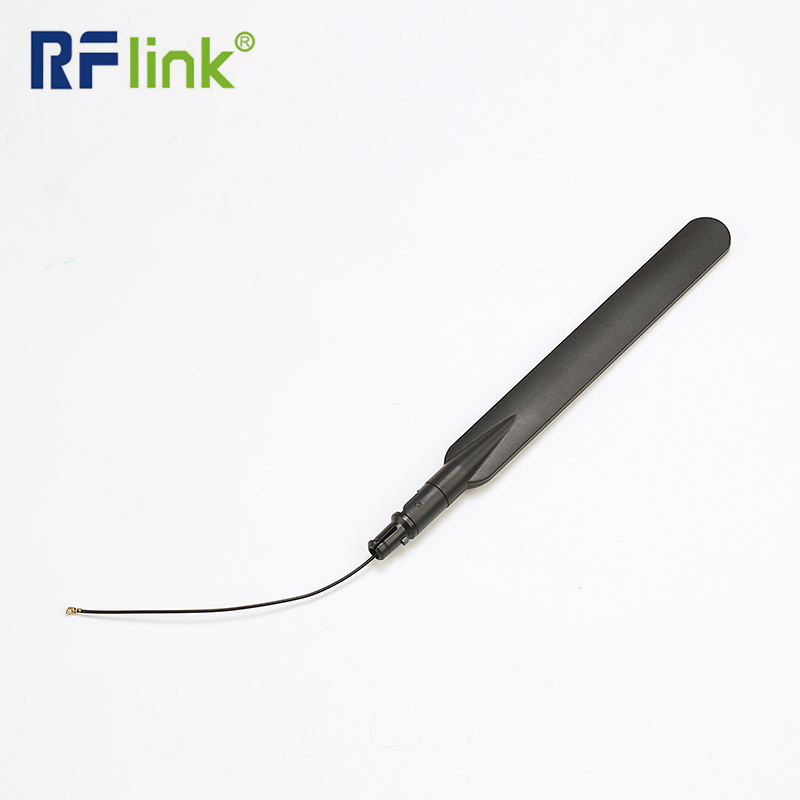2024-08-06 16:28:51
Introduction
A 4G antenna is a specialized device designed to support fourth-generation (4G) wireless communication networks. These antennas play a crucial role in enabling high-speed data transmission, improved signal quality, and enhanced connectivity for various applications.

Exploring Different Types of 4G Antennas: Omnidirectional, Directional, and MIMO
The fourth-generation (4G) wireless network has revolutionized mobile communication by providing faster data speeds, enhanced connectivity, and more reliable service. At the heart of this technological advancement are 4G antennas, which come in various types to meet different needs and applications. This article delves into the three primary types of 4G antennas: omnidirectional, directional, and MIMO antennas, exploring their features, applications, and benefits.
1. OmniDirectional Antennas
Overview:
OmniDirectional Antennas are designed to radiate or receive signals uniformly in all directions within a horizontal plane. They are characterized by their ability to provide 360-degree coverage, making them ideal for applications where broad coverage is required.
Features:
360-Degree Coverage: OmniDirectional Antennas transmit and receive signals in a circular pattern around the antenna, ensuring uniform coverage in all directions.
Ease of Installation: These antennas are relatively simple to install and do not require precise alignment, making them convenient for general use.
Simplicity: Their straightforward design means they often have fewer components and are less complex than directional antennas.
Applications:
Base Stations: Omnidirectional antennas are commonly used in base stations to provide broad coverage areas. They ensure that signals reach all directions, catering to mobile users within a specified radius.
Mobile Hotspots: In mobile hotspots or portable routers, omnidirectional antennas help ensure connectivity regardless of the device’s orientation.
Public Wi-Fi: They are used in public Wi-Fi hotspots where consistent coverage is needed across a wide area, such as in parks, shopping malls, and airports.
Benefits:
Broad Coverage: Ideal for environments where users are spread out in all directions.
Flexibility: Suitable for various applications where precise directionality is not critical.
Challenges:
Reduced Range: While providing broad coverage, the signal strength may be weaker compared to directional antennas.
Interference: More susceptible to interference from other signals as they pick up signals from all directions.
2. Directional Antennas
Overview:
Directional antennas focus their signal in a specific direction, providing enhanced range and signal strength within that direction. They are designed to concentrate the energy in a particular beam, improving performance and coverage in targeted areas.
Features:
Focused Beam: Directional antennas have a narrow beamwidth, allowing them to transmit or receive signals more effectively in a specific direction.
Increased Range: They offer greater range and signal strength in the direction they are pointed, making them suitable for long-distance communication.
High Gain: These antennas typically have higher gain compared to omnidirectional antennas, resulting in better performance over longer distances.
Applications:
Point-to-Point Links: Directional antennas are ideal for establishing point-to-point communication links, such as between two buildings or between a base station and a remote site.
Rural and Remote Areas: Used in rural or remote locations where extending coverage from a central base station to specific areas is necessary.
Enterprise Networks: In enterprise environments, they are employed to provide strong, targeted coverage in large buildings or across campuses.
Benefits:
Enhanced Range and Signal Strength: Effective for covering specific areas with stronger signal strength.
Reduced Interference: Less likely to pick up unwanted signals from other directions, reducing interference.
Challenges:
Precise Alignment Required: Installation requires careful alignment to ensure that the antenna is pointed in the correct direction.
Limited Coverage: Provides coverage only in the direction it is oriented, which can be limiting in dynamic environments.
3. MIMO Antennas
Overview:
MIMO (Multiple Input Multiple Output) antennas utilize multiple transmit and receive antennas to improve communication performance. This technology leverages multiple paths to increase data throughput, enhance signal quality, and improve overall network efficiency.
Features:
Multiple Antenna Elements: MIMO systems use multiple antenna elements to simultaneously transmit and receive multiple data streams, significantly boosting performance.
Spatial Diversity: By using multiple antennas, MIMO systems can exploit spatial diversity, reducing the likelihood of signal loss due to interference or obstacles.
Increased Data Rates: MIMO technology enables higher data rates and better bandwidth utilization, supporting high-speed data transfer.
Applications:
Base Stations: MIMO antennas are widely used in 4G base stations to enhance network capacity and provide better service to multiple users.
High-Speed Mobile Devices: Smartphones and tablets with MIMO antennas benefit from faster internet speeds and improved connectivity.
Wireless Routers: MIMO technology is employed in advanced wireless routers to deliver higher throughput and improved performance in residential and commercial settings.
Benefits:
Improved Data Rates: Higher data throughput and faster speeds.
Enhanced Reliability: Better performance in challenging environments with potential obstacles.
Challenges:
Complex Design: MIMO antennas are more complex to design and integrate compared to simpler antenna types.
Cost: Higher cost due to the inclusion of multiple antennas and advanced technology.
Understanding the different types of 4G antennas—omnidirectional, directional, and MIMO—helps in selecting the appropriate antenna for specific applications. Each type offers unique advantages and is suited to particular scenarios, from broad coverage needs to targeted signal strength and high-speed data transmission. By selecting the right type of 4G antenna, users can optimize network performance, enhance connectivity, and achieve their communication goals effectively.